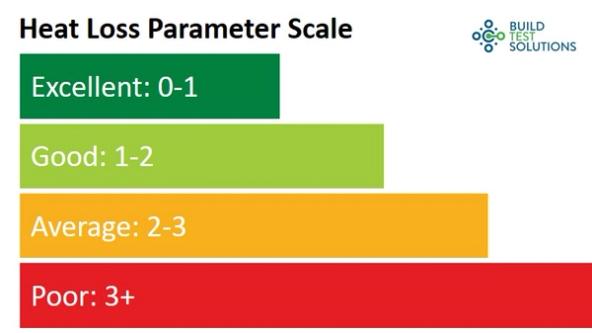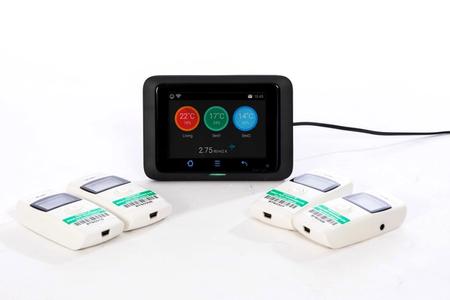Technical Guide
Heat Loss Parameter: A Metric for Total Fabric Performance
Build Test Solutions provides an overview of the Heat Loss Parameter and introduces a simple guide against which the performance of buildings can be measured.

Building Thermal Performance
A building’s thermal performance is key to its energy performance and thermal comfort, it is fundamentally important because the building will likely last longer than its systems or occupants.
The thermal performance of the building describes the resistance to heat flow through the fabric of the building, thermal bridges and air movement. It is equally important to keeping warm or cool.
What is Heat Loss Parameter or HLP?
The Heat Loss Parameter (HLP) is a measure of the rate of heat transfer to or from the building per degree of temperature difference between inside and out, normalised by the total floor area with units of W/m2K.
The HLP is calculated under the bonnet of all performance assessments, including EPC and SAP assessments. The predicted value can be directly compared with an as-built measured value. The HLP of buildings can be measured using SmartHTC in an unobtrusive way while they are occupied.
The thermal performance of buildings is also commonly defined by the Heat Transfer Coefficient (HTC), this is the same as the HLP but without normalisation by floor area with units of W/K.
The problem with using the HTC to compare different buildings is that a larger building will tend to have a larger HTC, but may actually have better fabric performance. For example, a large well-insulated house would have a higher HTC than a paper shoebox. By normalising the HTC, the fabric performance of buildings can be directly compared.
Normalising the HTC by dividing by floor area gives a good measure of the thermal performance per usable space in the building, and would include the important thermal benefits of an efficient built form (reducing exposed surface area).
Dividing by the total surface area of the building (as for air permeability) is an alternative that would give a more direct analysis of the thermal performance per unit area, but would not include the benefits of built form which are key to final building performance.
What's a good HLP?
We propose a simple guide:

In this scale a building with an Excellent rating would have thermal performance equivalent to a typical Passive House, OK would relate to a typical dwelling built to current building regulations, Poor a typical older existing building and Very Poor a particularly poorly performing building in need of immediate fabric improvement.
For reference, we can consider the HLP of a two-storey detached house with different levels of thermal performance. For simplicity of calculations in this example, the house is a 5x8x5m box.

[1] The limiting values given in Part L of the building regulations are the worst permissible performance levels for each element, to comply with the regulations it’s likely that better fabric performance levels would be required, and hence result in a better HLP.
[2] Roughly based on the elemental performance from the Admirals Hard project on the Passivhaus Trust UK website.




